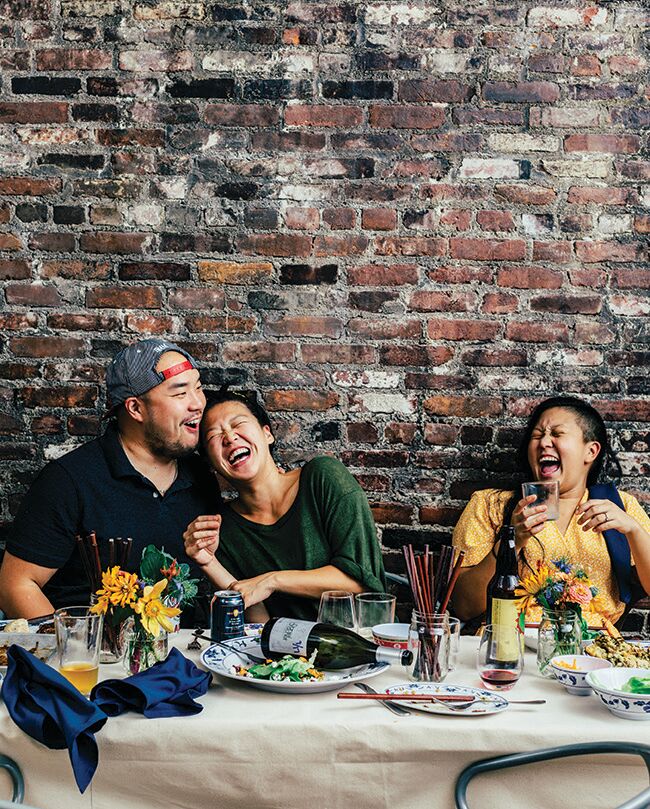When we read books, we look for ourselves.
If we don’t see a character that resembles us, we look at thematic elements and situations and feelings that bond us to the narrative, or for familiarity in the landscape, whether it be objects or hobbies we love. In finding a connection, we then develop empathy for the myriad things that do differ from our lives. This is how narrative works. Narrative burrows into our mind through an emotional door and an excellent story, and sometimes, ensuing insights stay with us for a lifetime.
For instance, I have nothing in common with Billy Colman in Where the Red Fern Grows. I didn’t grow up in the Ozarks. I am not male. I am not white. But I do love dogs. I began reading the book because of my love of canines. I continued reading the book because I believe in loyalty. And by the book’s end, I learned a whole lot about coonhounds, about life in the Ozarks, raccoon hunting and poverty. It was the first book I stayed up all night to read and the first book that made me sob.
This also applies to cookbooks. While we sometimes buy cookbooks to adopt a new cuisine, many of us buy them to capture nostalgia and our own history. Why else has the Joy of Cooking been in continuous print since 1936 and sold over 18 million copies to date? It documents American standards. It is the record of our cuisine. It is most American cooks’ familiar.
I’ve bought every Korean cookbook I’ve seen, beginning in 1993 with Copeland Marks’ problematic Korean cookbook, The Korean Kitchen: Classic Recipes From the Land of the Morning Calm — the only Korean cookbook published at the time. I remember seeing it on the bookshelf of the now-defunct Cody’s in Berkeley. It was offered in mass market paperback and contained zero pictures. It was written by someone who wasn’t Korean.
I didn’t care. Dear Reader, I bought it.
This cookbook, which I found on a lower bookshelf about six inches off the ground next to China Moon (a far less problematic cookbook written by Barbara Tropp, who is not Chinese) was the first in which I saw myself and the food with which I grew up. And I was breathless with gratitude. I nearly wept. I was not filled with a Where the Red Fern Grows-level of emotions, but I’ll never forget that moment.
And as I read it, I did go misty-eyed. Even if later, I became filled with rage that somehow the first spokesperson for our cuisine was an outsider.
But then came Hi Soo Shin Hepinstall’s cookbook, Growing Up in a Korean Kitchen. And A Korean Mother’s Cooking Notes. And recently, Deuki Hong’s Koreatown: A Cookbook. And who can forget Maangchi’s cookbook? I learned to cook food out of these books over the years, hacking together recipes that would resonate with my own taste buds and food memories.
For me, the representation of Asian America lies not in fusion, which I feel is defined by intention, but in hybridization, which is borne out of circumstance and necessity.
Cookbooks are an emotional journey.
Food is so often the way in which we are introduced to different cultures. I didn’t just buy Korean cookbooks. Before I knew anything about Thailand, I had eaten pad thai and curry to my heart’s content. I bought Thai cookbooks. Learned to cook Thai food. And in doing so, I wanted to know more about Thailand.
Anthony Bourdain was well known for his love of Vietnamese food — and it was the food that preceded his love of Vietnamese culture and people; he famously quit the Travel Channel because they wouldn’t let him travel to Vietnam anymore. Afterward, he made sure that wherever he landed, he’d be able to travel to Vietnam.
In myriad ways, food is the gateway to loving each other. And caring for ourselves.
For those of us on the literal hyphen of Asian America, there are even fewer cookbooks that represent our bicultural being. That represent what it feels like to open a lunchbox and be shamed. That represent what it feels like not to have access to the ingredients to make what comforts us. That represent the foods we cobble together with what we can forage from our backyards and American grocery stores. The food we make from need and circumstance.
For me, the representation of Asian America lies not in fusion, which I feel is defined by intention, but in hybridization, which is borne out of circumstance and necessity. These are the meals we made from what we could cobble together. These are Ragu atop white rice (“Prego if you’re fancy!” a friend of mine added, when I asked her about her childhood foods). These are chow mein. Savoy cabbage and parsley kimchi. The humble foods that have borne us through cultural pluralism. That make up what is distinctly American, like gumbo and barbecue before us.
As the diaspora of Asian America expands, so does the diaspora of our food — and its reflection in cookbooks.
This is where Double Awesome Chinese Food comes in. It is where Asian food and American food meets. It is the debut cookbook of the siblings — Irene, Mei and Andrew Li — behind Mei Mei restaurant in Boston.
Having zero familiarity with their restaurant and food truck origins, I thumbed through the manuscript pages, expecting to see the usual Chinese standards: mu shu pork, chow mein, kung pao chicken, hot and sour soup.
Nope.
What I saw were New England-influenced Chinese American dishes (cranberry sweet and sour pork), Southeast Asian-meets-Texas (do we call it “Tex-sea?”), as well as completely hybridized food without a particular home (the eponymous Double Awesome sandwich and the beef and blue cheese dumplings).
These were uncategorizable dishes.
And at first — I was offended: “This isn’t — Chinese!”
And here’s the thing: it isn’t. It was not written with the intention of being Chinese.
Mei, Irene and Andrew grew up like me. I was a latchkey kid who came home and hacked food — mostly a combination of Ralphs' supermarket and Korean market-sourced ingredients — together. I sensed kindred spirits. You can always spot a unicorn when you’re a unicorn.
So I asked them a little about their background.
“Yeah,” said James Beard Rising Star Chef semifinalist Irene, “we were among mostly white kids growing up in the ’80s and ’90s — my elementary school grade had about 50 kids and never more than two to four Asian Americans (and almost always Chinese). I also identify with what you say about hacking stuff together — I think that's part of my objection to 'fusion.' Rummaging around in the kitchen with a scallion pancake and deciding to turn it into a grilled cheese is less an intentional act of fusing two things. It's just an organic, very natural result of being Asian American.”
In sum, this is not traditional food, nor is it fusion food.
This is Chinese food built upon American terroir. In the case of Mei Mei, the chefs build on the terroir of Boston and its surroundings — like the cranberries in the cranberry sweet and sour pork.
It’s hard to categorize the food in Double Awesome Chinese Food — because it’s uncategorizable, even to its creators. Mei Li said, “We've wrestled with what to call our food for a long time. Chinese American, or Creative Chinese American, has kind of been our go-to since the early days of the food truck, to signify that there are Chinese influences, but with the other words in there so people don't expect it to look like what you might consider either Americanized Chinese food or 'authentic' Chinese food.”
She went on, weaving further complexities into their food profile: “We also often add in a note about local sourcing as our food is also driven so much by our local/regional farmers, so ingredients you rarely/never see in Chinese food (at least in the United States) like cranberries or maple syrup or sweet potatoes make appearances. And then we also use Japanese noodles, Korean chili pastes, Thai curry sauces … which makes it even harder for people to put us in a box. Multicultural food? ABC food? Just 'food'? It's so hard to define and so hard to fit into the classic categories that people expect, although we understand why those categories can be helpful for people too.”
The Lis dodge and weave when it comes to categorization, despite the word “Chinese” in the cookbook’s title. What did that mean, I wondered.
I cooked my way through the book, sometimes grimacing, sometimes dubious, sometimes surprised. But that is what it is like to be Asian American. To be somewhere that has no definitive home. To be grimaced at, to be doubted, to elicit surprise.
Mei Mei is the forging of a new identity. And sometimes the first foray isn’t perfect — as the beef and blue cheese dumplings weren’t. Perhaps its my own aversion to blue cheese — but it’s not something I’d try again. Your mileage may vary. But then there are things like the cranberry sweet and sour pork — this fresh, non-ketchup-based rendition of a Chinese standard. As well as the amazing red curry Frito pie — which I doubted but thought was a refreshing take on something I thought had already been perfected.
I was able to source all the ingredients from mainstream American supermarkets. I found everything too, at Trader Joe’s. The only thing I couldn’t find were dumpling skins — so I decided to make the dumpling skins from scratch. And as odd as some of the flavor profiles were — I had fun cooking the dishes. There was an overt sense of play and delight in the recipes. It was clear, because I felt joy, that the Li siblings also experienced delight as they created these dishes. This book gives us permission to play and acts as a springboard from which to experiment.
It’s this sense of play and innovation that birthed the Double Awesome. Here is the origin story of their trademark sandwich:
“Yes, the Double Awesome was made specifically for the food truck,” said Mei. “We had a much longer description of its invention in the book but it didn’t make it in for space reasons. Basically, we opened the food truck planning to focus on dumplings, but after selling our entire inventory of scratch-made, hand-rolled dumplings on our first day, we realized there was no way we could keep up. We realized that scallion pancakes would be a delicious and quick-to-prepare alternative to sandwich bread/tortillas that were successful and easy to prep at other food trucks. Throughout our childhood, we’d always have frozen scallion pancakes in the freezer and it just seemed like an obvious fit for our Chinese American style food truck. We started experimenting with all kinds of fillings — some I remember are Vermont Brie plus roasted parsnips plus cranberry sauce, or roast beef with potato salad and hoisin sauce, a riff on a BLT, red-cooked beef with a blue cheese sauce and spicy pickles.”
See the sense of play?
I cooked my way through the book, sometimes grimacing, sometimes dubious, sometimes surprised. But that is what it is like to be Asian American. To be somewhere that has no definitive home. To be grimaced at, to be doubted, to elicit surprise.
She continued, “The Double Awesome came from just having those random ingredients in the fridge, as back in the day, we never had a permanent menu. We’d make lots of components like sauces and meats and combine them for different dishes. But all of us love a good egg and cheese breakfast sandwich, and we also grew up eating a lot of pesto (pesto pasta was a very common meal for us) so it all fit together in a way that made sense. We thought our guests would enjoy it as much as we did, but we didn’t anticipate how enduring the love would be. Luckily, from our food truck to our current restaurant, we’ve always had clientele who appreciate the creativity/inauthenticity/willingness to experiment that our food represents. Whether they’re college students or young professionals or downtown office workers, they choose our food truck for the unusual yet delicious dishes — you don’t come to Mei Mei if you’re looking for the same old thing you always eat.”
The Lis didn’t set out to write the Joy of Cooking. They didn’t set out to make a cookbook that would be identifiable. They set out to offer something that I feel is incredibly uncomfortable at times for people who cling to tradition. In fact, it’s this discomfort and pushing of the boundaries that makes this cookbook valuable in a library. It’s a record of interstitial space.
“It’s not authentic Chinese food and isn’t intended to be — but it’s authentic to our experiences growing up and now in the present. We wrote this book for anyone who is interested in cooking and eating Chinese food but isn’t searching for ‘authenticity,’ for people who want to eat good food and don’t care that it isn’t neatly categorizable, for people who want to learn to cook a bit more creatively and incorporate ingredients that might feel new or foreign, for people who want to be a bit more eco-friendly in the kitchen or support sustainable food systems,” described Mei Li.
If you’re looking for a cookbook out of which to cook standards and to learn technique — this one may not be for you. The recipes are wildly fantastic. Some of them fail. But even with the ones that made me wrinkle my (low-bridge) nose, I learned something new. I learned to make dumpling wrappers from scratch.
I also learned to play. I made some of these dishes multiple times — in my second try of the Double Awesome scallion pancake sandwich, I left off the cheese — using only egg and pesto as fillers, and it became a perfect and fantastic sandwich for me. (Unlike the Li’s, who jokingly self-describe their style as “Chinese food with cheese,” I don’t much like cheese on my Asian food — mostly because I’m lactose intolerant — but again, your mileage may vary, especially if you like American cheese atop your ramen).
This cookbook is a sandbox in which to play; it creates space and makes up its own rules when it comes to cultural pluralism. This cookbook is about what happens when you don’t have all the ingredients for tradition, but you have all the imagination.
RED CURRY FRITO PIE
We should be up front here: Frito pie is not really a pie. It’s usually made with chili, cheese and other tasty stuff tucked into a snack-size bag of Fritos, as if nachos came in a handy carrying case (hence its other moniker, the walking taco). In Boston we’ve become a bit famous for Frito pies. We top them with Kung Pao Chicken Dip (page 154) or Cumin Lamb (similar to page 168) and serve them at craft beer festivals, fundraiser pop-ups and benefit galas. Here we include our Summer Sunset Curry variation, but we also encourage you to try the curries on pages 133 and 137 along with other toppings. The sauce can easily be multiplied for feeding a party or to serve half as Frito Pie and half over rice and veggies for a simple dinner.
Serves 4 as a hearty snack
SUMMER SUNSET CURRY SAUCE
- 1½ tablespoons (20 g) neutral oil, such as canola
- ¼ medium onion, minced
- One 1-inch piece ginger, minced
- 2 cloves garlic, minced
- 1 tablespoon (16 g) red curry paste, or curry paste of your choice
- 10 ounces (285 g) coconut milk
- 1½ teaspoons (8 g) tomato paste
- 1 teaspoon (7 g) honey
- 1 teaspoon (5 g) apple cider or rice vinegar
- Kosher salt
TO SERVE
- 4 snack-size bags of Fritos
- ½ cup (60 g) shredded cheddar cheese
- ¼ cup (60 g) sour cream
- 2 tablespoons (15 g) minced red or white onion (optional)
- 8 sprigs cilantro, roughly chopped
MAKE THE CURRY SAUCE
- Heat the oil in a medium saucepan over medium-low heat until shimmering. Add the onion, ginger, garlic and curry paste and cook, stirring occasionally, until the vegetables soften, about 6 minutes.
- Add the coconut milk and tomato paste and turn up the heat to medium. Bring to a simmer and simmer for 8 minutes, stirring occasionally, reducing the heat slightly if the sauce starts to boil furiously. Remove from heat, stir in the honey and vinegar, and season with salt.
ASSEMBLE THE FRITO PIES
- Divide the curry sauce among the 4 bags of Fritos. Sprinkle each bag with an equal amount of cheese, sour cream, onion and cilantro and serve immediately.
From Double Awesome Chinese Food by Margaret Li, Irene Li and Andrew Li © 2019 by Margaret Li, Irene Li and Andrew Li. Photographs by Michael Piazza. Reprinted in arrangement with Roost Books, an imprint of Shambhala Publications, Inc.










Comments